How to properly transplant a yucca at home?
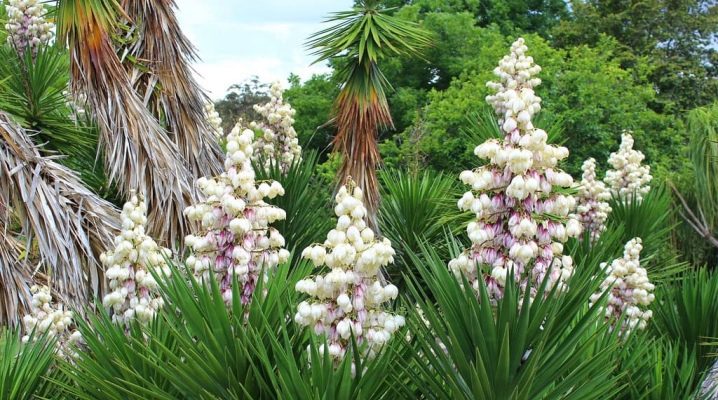
The beautiful yucca plant is very similar to a carefree girl with a perky tail. And for this beauty to remain for a long time, it is important to properly care for the "false palm", to transplant and feed on time. How to do this is the topic of today's conversation.
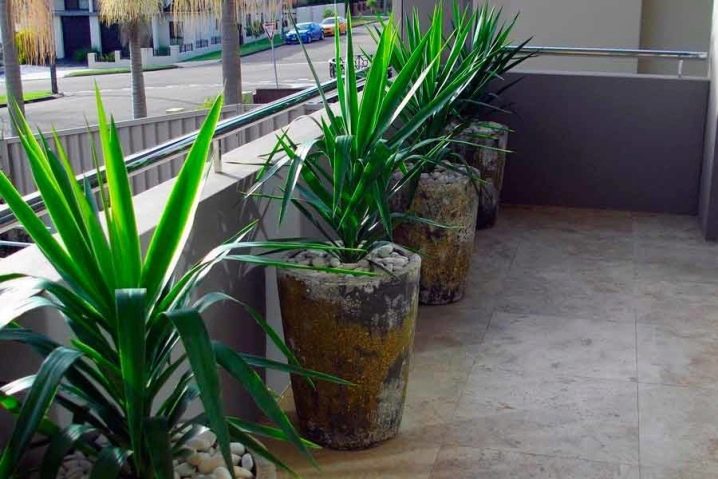
Why and when do you need a transplant?
Regular transplanting is necessary for any home plant. There are several reasons for this.
Unsuitable substrate in a shop flowerpot
The sellers in the stores themselves advise, after the purchase, to transplant the plant into another soil and pot.
The reason is in the transporting substrate - sterile peat, which is used for industrial flower cultivation.

He doesn't need watering. At home, the first thing we do is water a new plant. Gradually, the peat is compressed, does not allow air to pass through, gets wet and becomes a favorable breeding ground for the fungus. Yucca starts to rot. The correct transplant is considered immediately after purchase, regardless of the time of year: after purchase, the plant can be transplanted even in winter. Of course, this will be a great stress for the flower, but later he will appreciate this concern.
Plant growth
Not only the aerial part of the flower grows, but also the root system. Over time, the roots become cramped, this leads to a slowdown in foliage growth and its yellowing. In addition, the more roots in the pot, the less land, i.e., the yucca has nowhere to get nutrients. Usually indoor yucca is transplanted in the first two years at the end of each February or later.
The next planned transplant is in the fourth year of growth, then in the sixth. Further - once every 3 years.
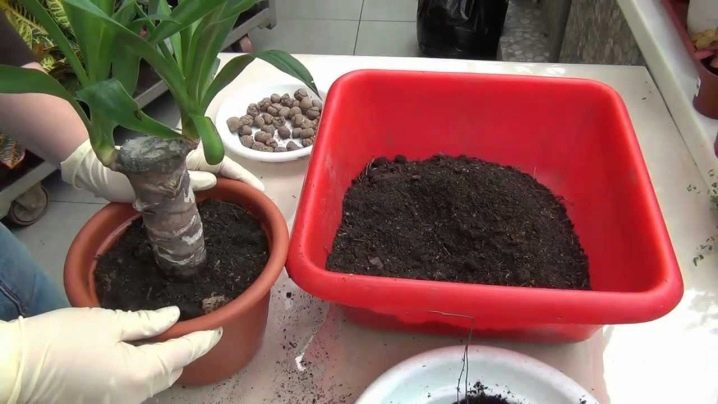
Autumn and winter are considered an unfavorable time for a planned transplant with transshipment of an earthen root. Each time the pot is taken several centimeters larger than the previous one. Certain problems with a planned transplant may arise if the yucca is large. But these are problems of the physical plane - a heavy earthen lump with a palm tree must be carefully removed and transferred to a new pot. The rest of the technology is the same.
Reanimation of a plant after illness, freezing, decay of roots from overflow
Determine that the plant is sick, its appearance will help. The trunk will most likely tell that the roots have rotted - it will begin to fall. In an emergency and the flower freezes, the leaves will turn into a slippery porridge after thawing. The same will be the trunk under the bark. The method of transplanting will depend on the reason: if there are pests or rot in the soil, then it is easier to propagate the plant with a healthy cuttings from the trunk. If the yucca froze from above, then the roots could remain intact, then the above-ground part is cut off completely, and the roots are left.
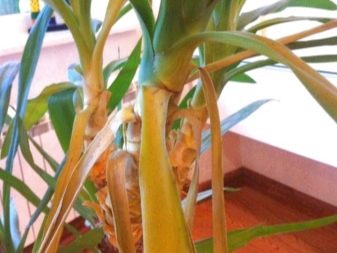
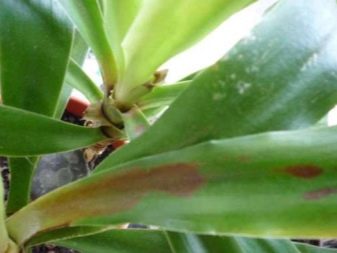
Pot and soil selection
The yucca pot is chosen from ceramic or plastic. The larger the palm, the more difficult it will be to handle the heavy ceramic pot. But the flower is more comfortable in it, as it evenly warms up and dries out. Each new container should be 3-4 cm larger than the root earthen coma. It is recommended to take the height of the pot 2-2.5 times more than the width. The main thing is that there are drainage holes. It's a good idea to buy an auto-irrigation pot that allows you to determine the amount of moisture in the substrate.
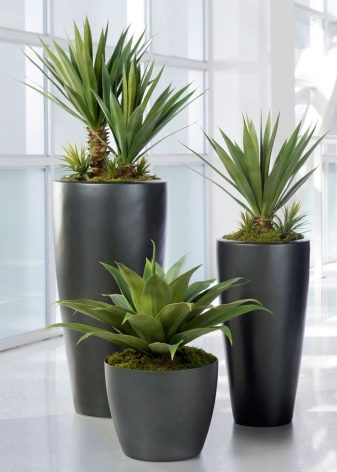
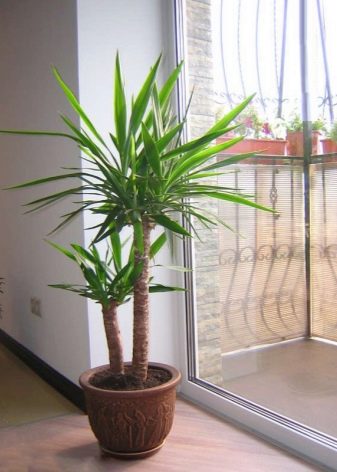
When choosing the composition of the soil, do not forget about the drainage mixture. This can be commercially available perlite or vermiculite. But you can look for broken brick, fine expanded clay, coarse sand, gravel in the yard. Some growers even use pieces of styrofoam.The main thing is that it is an inert material that does not retain excess water in the pot. With regard to the soil itself, there are several options that are suitable for the "false palm":
- ready-made store soil for palm trees or dracaena;
- for a variety of soil, sand, perlite volcanic rock or vermiculite mineral can be added to this soil;
- Mix 7 parts of universal soil with 3 parts of sand;
- mix leafy soil with sand, compost and turf in a ratio of 2: 2: 1: 2;
- instead of compost, the amount of sod is increased by part.
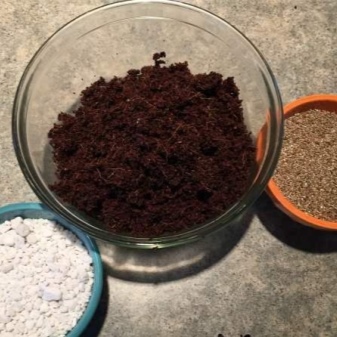

How to transplant?
The answer to the question "how to transplant a yucca?" depends on why it is being transplanted. To carry out the correct procedure at home, we will try to describe step by step the actions of flower growers, depending on the reason for transplanting a flower.
Changing the pot after purchase
A shop pot with a flower is placed in a deep basin, a bucket for 1 hour, so that the water covers the ground. It is necessary to cut off a few lower leaves from the plant so that the top gets more nutritious food, and it goes into growth. The bottom of the pot, which should be slightly larger than the store one, is covered with a drainage layer of 3-4 cm. Pour 2-3 cm of soil. The flower is very carefully taken out and washed with the store soil, rinsing with clean water. In case of damage to the roots, the plant can be sick for a very long time.
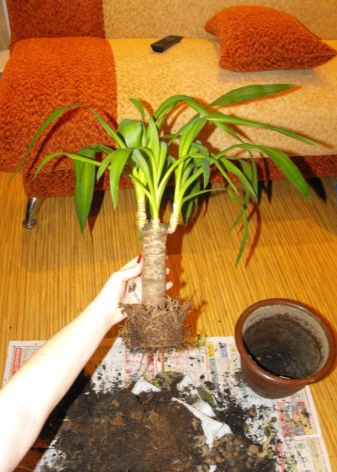
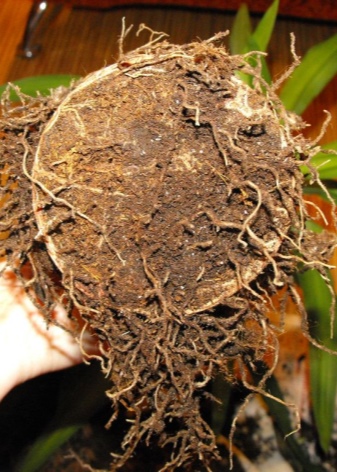
The root system is carefully distributed in a pot and sprinkled with soil in such a way that the stem is buried no more than 2 cm.The earth is slightly moistened. Yucca is placed in a bright place without direct sunlight and is not watered for two days. The roots will reach out to the water and stick to the ground.
A comfortable temperature for the plant is 20-25 degrees.
Regular transplant
It is held in April-May. The earth is spilled to soften it. If necessary, they pass along the walls with a sharp knife so that the earth moves away more easily. Prepare a new pot in the same way as in the first case. But the flower is relocated by the transfer method, that is, together with an earthen clod from an old pot. New soil is added on top and on the sides.
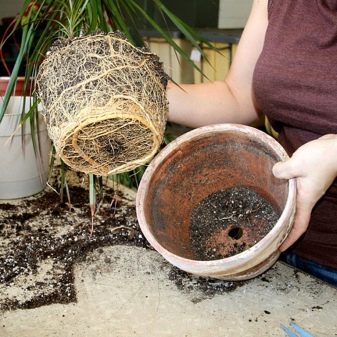
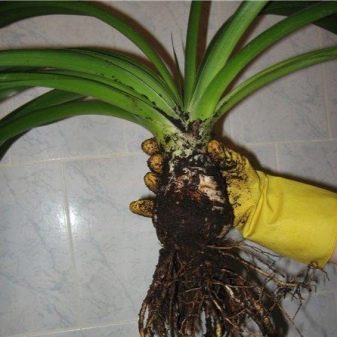
Plant resuscitation
There can be 2 options: while preserving the roots, or growing a cuttings. The plant is removed from the pot and the root system is carefully checked. If there is any suspicion that the root is affected, it is better to remove it. Sections from diseased roots are treated with crushed activated carbon. A new pot must be prepared for the plant. Since myceliums are very tenacious, it is not recommended to use an old pot. Further planting technology is the same: drainage, soil, flower, soil. Yucca is not moisturized for 3-4 days and is protected from the bright sun.
If the roots have rotted completely, but the crown is alive, then the yucca is propagated vegetatively. The crown or stalk is completely cut off with a sharp knife. The height of the cutting is 12-15 cm. The cut is treated with antibacterial agents, and then placed in a glass with settled water. Water is added as it evaporates. Soon roots will appear on the cut. Transplanting into the ground is carried out when the length of the roots is more than 1 cm.The transplantation rules are standard. But it is imperative to water the plant.
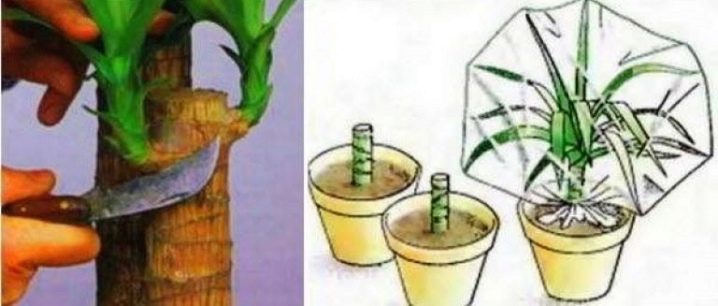
Frequent mistakes
When transplanting, flower growers often make mistakes, because of which the plant cannot take root for a long time or dies. Here are the most common ones.
- With the annual planned transplant, they completely removed the soil from the roots, thereby they could damage the root system, forced the plant to get used to the new substrate, and slowed down the growth of yucca. If the soil does not fit, then the plant may die.
- The transplant was carried out in the autumn-winter period, when the palm tree is at rest, does not give new leaves. Here the plant was forced to adapt to new conditions, weakening it.
- Excessive watering is the most common mistake, sometimes causing irreparable damage to the flower.
- Insufficient lighting due to poorly chosen location. If the apartment is dark, then a table lamp is turned on next to the flower.
- Direct sunlight on the leaves of a young plant, which leads to burns and drying out of the soil.
- Top dressing at the same time as transplanting does not allow the plant to adapt, instead of rooting, it makes it immediately take active actions to grow the aerial part. It is best to fertilize approximately 2 weeks after transplanting.


Further care
At home, with proper care, yucca can grow up to 2 meters. At the same time, it does not require much effort. Watering is carried out rarely, at the rate of 1 liter of settled water per 5 liters of soil. At an air temperature of + 20 degrees, the plant is watered once a week, when the topsoil is 5 cm dry.
In winter, during the dormant period, watering is reduced. A vivid indicator that the plant has excess moisture - the edges of the leaves darkened to brown, began to rot. It can also happen because the plant is being sprayed. This is not necessary. Yucca loves dry air and sunlight. It can stand in direct sunlight for some time, but not for long. Without light, the leaves become thinner, pale and lethargic.
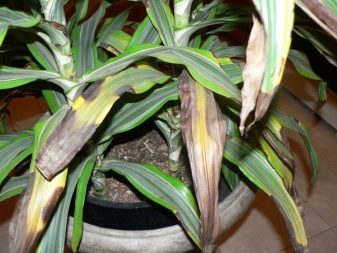
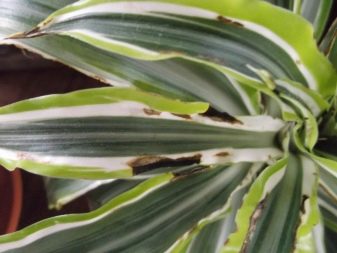
In the spring and summer, the palm is fed every 14-21 days. From what amateur flower growers offer, you will hardly want to use it at home. Because it is a mixture of humus and horse manure. Great fertilizer, of course, but for the outdoors. Therefore, it is better to use store food for palm trees, ornamental foliage plants.
You can not feed the yucca during the period of illness, as well as within two weeks after the transplant. And those who have yucca growing at home are advised to carefully loosen the topsoil and remove salt deposits.
If the "false palm" has lost its decorative effect due to improper care, then it can be rejuvenated, revived. For example, during a plant illness, lack of lighting, its trunks twisted. The situation can be changed in two ways.
- Stick a trellis into the pot, to which, carefully straightening, tie the trunks. The work is very painstaking.
- Trim trunks and allow new, straight shoots to grow.
Pruning is done in any case to give the flower a decorative shape. But after that, watering and feeding must be stopped for a while, since the plant does not spend them on trimmed leaves and shoots. Cut the trunk when it has a diameter of 6 cm or more so that it can withstand future loads. After processing the cut, the growth of the trunk will stop completely.
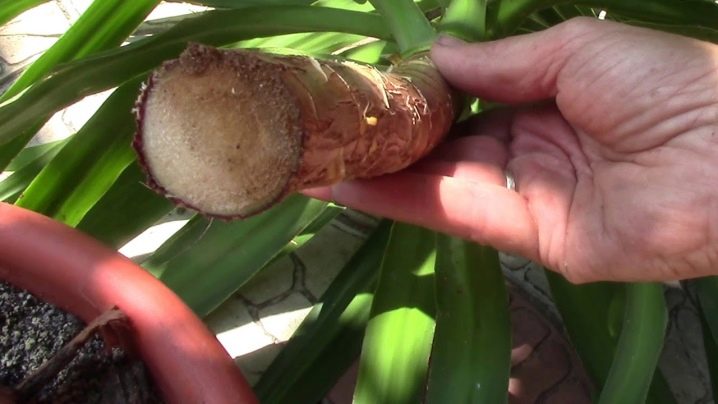
The plant is pruned in early spring, at the beginning of the active growth phase. To do this, use a sharp knife, which was treated with pure alcohol for some time. Since yucca is a tree, it will take strength and patience to prune. The cut is made high enough above the ground, cutting off the trunk completely so as not to damage the growth points. The barrel is sprinkled with crushed activated carbon. If everything is done correctly, then after 3 weeks the buds should start growing near the cut.
Another problem that a florist may face is pests. In yucca, these are leaf-eating beetles, scale insects, false scales, caterpillars, aphids, mealybugs, thrips, herbivorous mites. All pests can be successfully dealt with at the initial stage of the appearance of insects. Therefore, you need to carefully and regularly inspect the plant, wipe the leaves with a damp cloth dipped in soapy water.

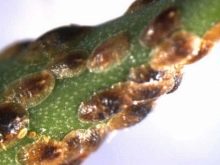
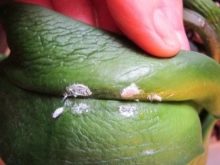
If insects do appear, then the plant must be quarantined - set as far as possible from all other flowers. Despite the fact that each pest is fought in its own way, the principle is the same - insecticides or folk remedies to fight insects. If the spraying does not help, the plant dies, then they get rid of it so as not to infect other flowers. In some cases, if the plant has a healthy part (root, stem, lateral process or tip), it is carefully cut off and a new plant is grown.
See below for more details.






























The comment was sent successfully.